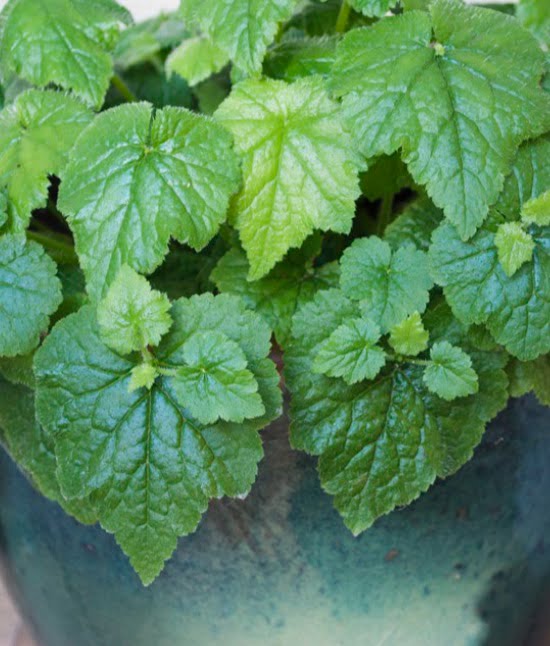[Ebook Việt Hoá] What's wrong with my houseplant (Có vấn đề gì với cây trong nhà của tôi?) - David Deardorff & Kathryn Wadsworth, Chi Tolmiea
[Ebook Việt Hoá] What’s wrong with my houseplant?: Piggy-back plant (Tolmiea menziesii)
- Biên tập: Dũng Cá Xinh
- Người dịch: Mai Nhung
ENGLISH
Most good houseplants are tropical, adapted to warm nighttime temperatures and rainforest conditions. Piggy-back plant (Tolmiea menziesii) is an exception. The maritime climate from which this native Pacific Northwesterner hails is very different from the typical home environment, and yet piggy-back plant holds its own as a houseplant. Its tiny inconspicuous flowers are reddish brown and carried on 1- to 2-foot-tall stems. The softly hairy foliage is roughly heart- shaped with scalloped and lobed edges. The leaves, 2 to 5 inches long, are borne on hairy leaf stalks that likewise vary in length. Leaf color is typically bright medium green, but variegated cultivars are available. Piggy-back plant has the distinctive habit of growing new baby plantlets where the leaf stalk joins the leaf blade. As these baby plantlets grow larger, they form little plantlets of their own, and the result is a cascading chain of foliage. These long chains of leaves, with plantlets attached, are especially attractive dangling from a hanging basket.

Some people are sensitive to the hairs on the leaves and stems of piggy-back plant, from which they can acquire a contact der- matitis. If you think you might be sensitive, or just want to be cautious, wear gloves when handling this plant.
OPTIMUM HOUSEHOLD ENVIRONMENT
Read the Introduction for the specifics of each recommendation.
MEDIUM LIGHT.
Filtered light with no direct sun suits piggy-back plant best.
LOW TEMPERATURE.
Daytime 65 to 75°F, night- time 55 to 65°F.
MODERATE WATER.
Water whenever the top of the potting medium becomes dry to a depth of 1 inch.
HUMIDITY.
Mist your plant occasionally with a spray bottle of water on a mist setting, or use a handheld mister. Put the pot in a saucer or tray of water, making sure the bottom of the pot never sits directly in the water by raising the pot up on pot feet or pebbles.
POTTING MEDIUM.
Use any good organic, general-purpose potting soil that incorporates organic fertilizer, mycorrhizal fungi, and other beneficial microbes.
FERTILIZER.
Use any balanced organic fertilizer. Apply every two weeks through the growing season and monthly in winter.
POTTING.
When your plant needs up-potting, shift it to a container with a diameter 2 inches larger than the current pot.
PROPAGATION.
Piggy-back plant is easy to propagate from leaf cuttings and by division of the rhizome.
COMMON PROBLEMS
Watch for brown leaf tips (page 246) and spider mites (page 263).
Tiếng Việt
Hầu hết các cây trồng trong nhà đều là các loại cây nhiệt đới, thích hợp với nhiệt độ ấm về đêm và điều kiện khí hậu của những rừng mưa. Cây Tầm Ma (Tolmiea menziesii) là một ngoại lệ. Khí hậu hải dương mà người Tây Bắc Thái Bình Dương bản địa này ca ngợi rất khác so với môi trường trong nhà thông thường, và cây Tầm Ma (Tolmiea menziesii) vẫn được coi như một cây nhà. Những bông hoa nhỏ khó thấy của nó có màu nâu đỏ và ở trên những thân cây cao từ 30 đến 60 cm. Tán lá có lông mềm gần giống hình trái tim với các cạnh hình vỏ sò và chia thùy. Các lá dài từ 2 đến 12 cm, được sinh ra trên các cuống lá có lông và chiều dài cũng khác nhau. Màu lá thường là xanh lục sáng tùy thuộc vào các giống cây khác nhau. Cây Tầm Ma (Tolmiea menziesii) có điểm đặc biệt là các cây con mới xuất hiện ở nơi cuống lá nối với phiến lá. Khi những cây con này lớn hơn, chúng hình thành những cây con nhỏ của riêng mình, và kết quả là tạo ra một chuỗi lá xếp tầng. Những chuỗi lá dài có gắn các cây con, đặc biệt hấp dẫn khi treo lủng lẳng trên giỏ treo.

Một số người nhạy cảm với lông trên lá và thân của cây Tầm Ma (Tolmiea menziesii), nguyên nhân làm cho họ có thể mắc bệnh viêm da tiếp xúc. Nếu bạn nghĩ rằng bạn nhạy cảm, hoặc chỉ muốn thận trọng, hãy đeo găng tay khi xử lý loại cây này.
MÔI TRƯỜNG TỐI ƯU HÓA
Những chỉ dẫn để chăm sóc cây Tầm Ma (Tolmiea menziesii) bao gồm:
ÁNH SÁNG VỪA
Ánh sáng có màng lọc gián tiếp từ mặt trời thích hợp với cây Tầm Ma (Tolmiea menziesii)
NHIỆT ĐỘ THẤP
Nhiệt độ ban ngày từ 15 đến 24°C, nhiệt độ ban đêm từ 12 đến 15°C.
ÍT NƯỚC
Tưới nước bất kì khi nào bầu đất khô tới 2,5 cm.
ĐỘ ẨM
Phun cho cây thường xuyên bằng bình phun nước hoặc sử dụng bình phun cầm tay. Đặt chậu vào khay nước, đảm bảo đáy chậu không trực tiếp chạm nước bằng cách đặt đáy chậu lên đá cuội hoặc chân đế.
SANG BẦU ĐẤT
Sử dụng bất kì loại đất hữu cơ đa năng nào có thể kết hợp với phân bón hữu cơ, nấm cộng sinh và các vi khuẩn có lợi khác.
PHÂN BÓN
Sử dụng bất kì loại phân bón hữu cơ cân bằng nào. Bón cho cây 2 tuần một lần trong mùa sinh trưởng và hàng tháng vào mùa đông.
SANG CHẬU
Khi cần sang chậu, chuyển cây tới chậu có đường kính lớn hơn chậu hiện tại 5 cm.
NHÂN GIỐNG
Cây Tầm Ma (Tolmiea menziesii) dễ dàng nhân giống bằng cách cắt lá và phân chia thân rễ.
NHỮNG VẤN ĐỀ THƯỜNG GẶP
Đề phòng bệnh nâu đầu lá (trang 246) và bệnh nhện vảy (trang 263).
![[Ebook Việt Hoá] What’s wrong with my houseplant?: Piggy-back plant (Tolmiea menziesii) [Ebook Việt Hoá] What’s wrong with my houseplant?: Piggy-back plant (Tolmiea menziesii)](https://vn1.vdrive.vn/codai.net/2021/03/62-tolmiea-menziesii.jpg)


